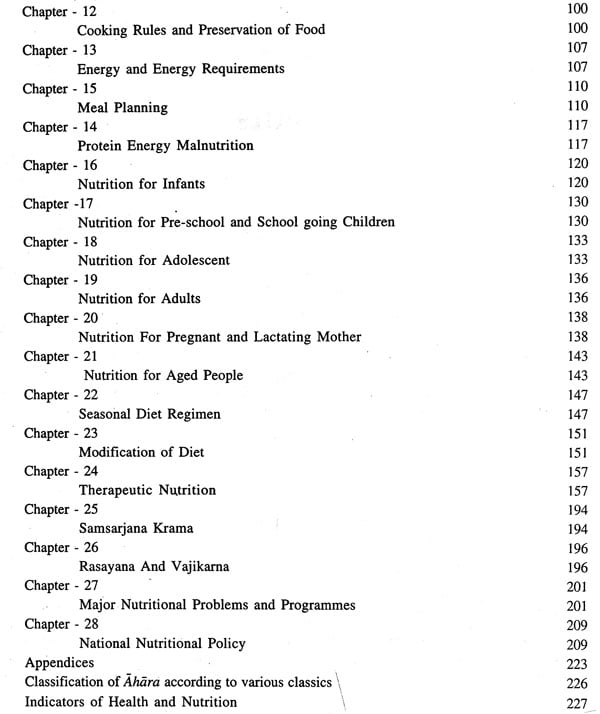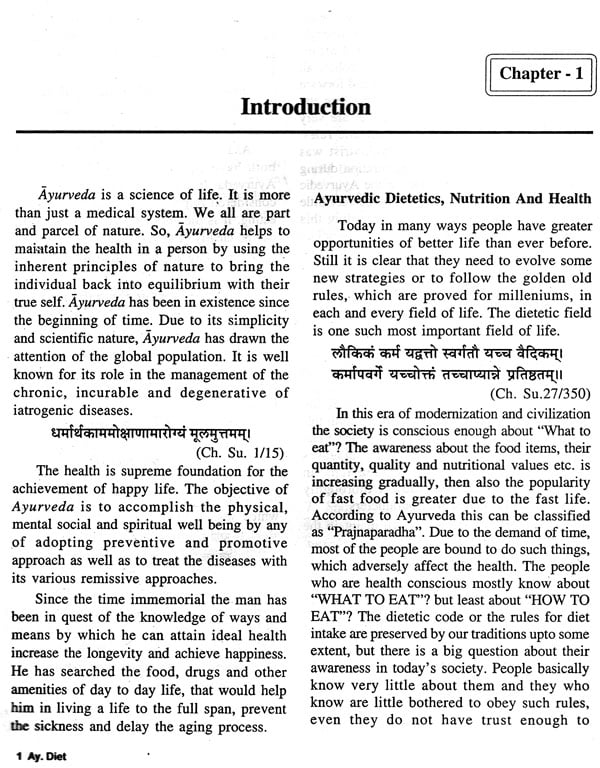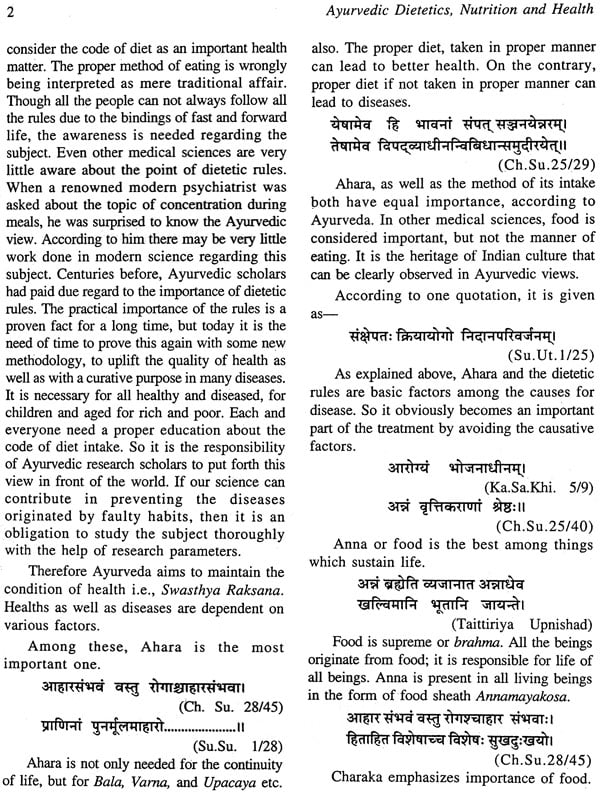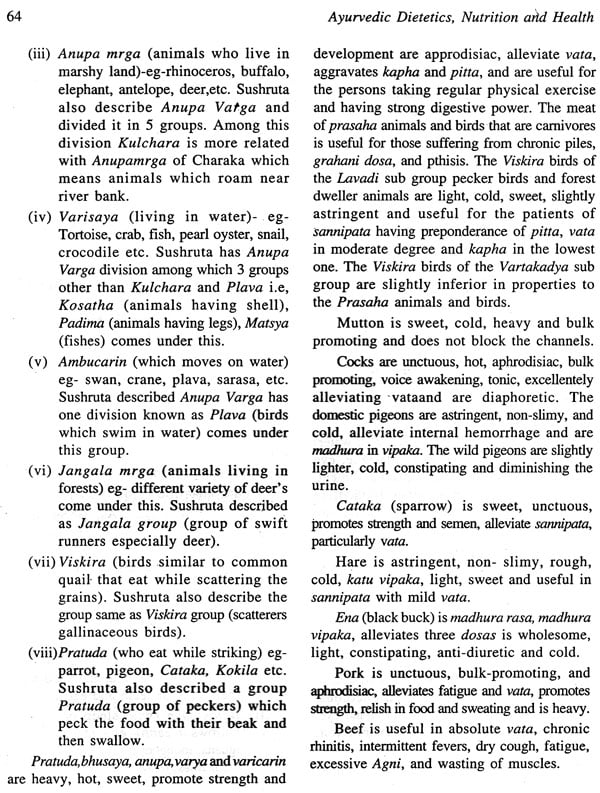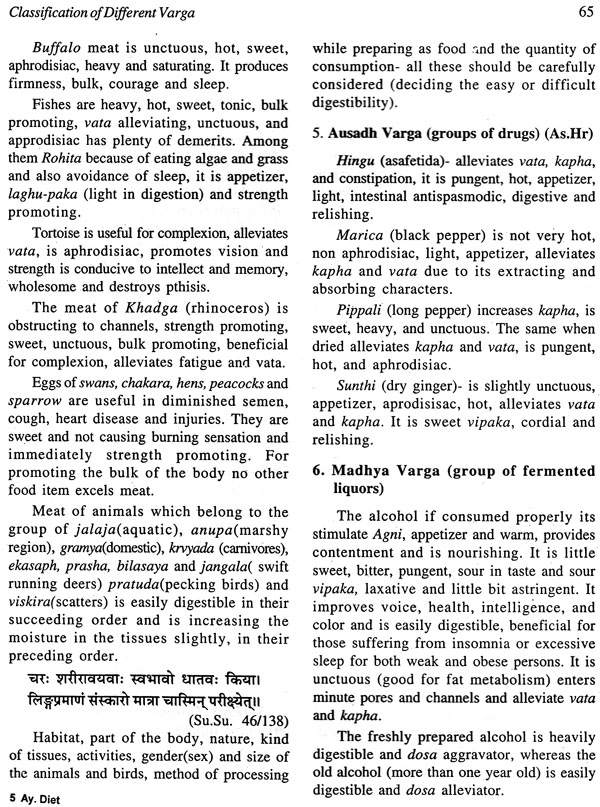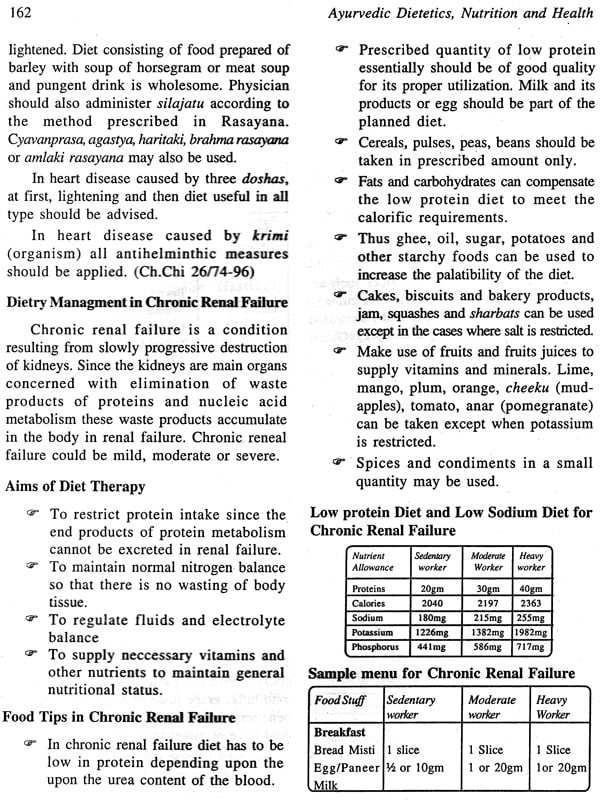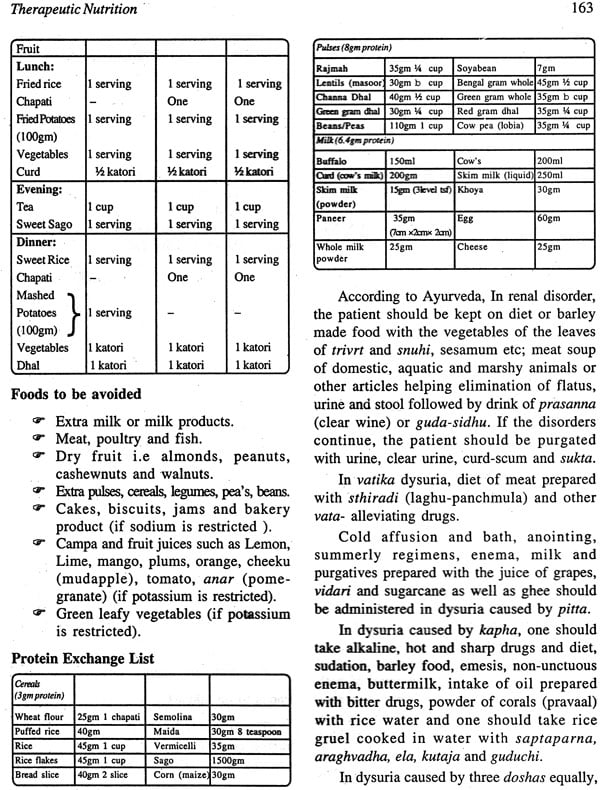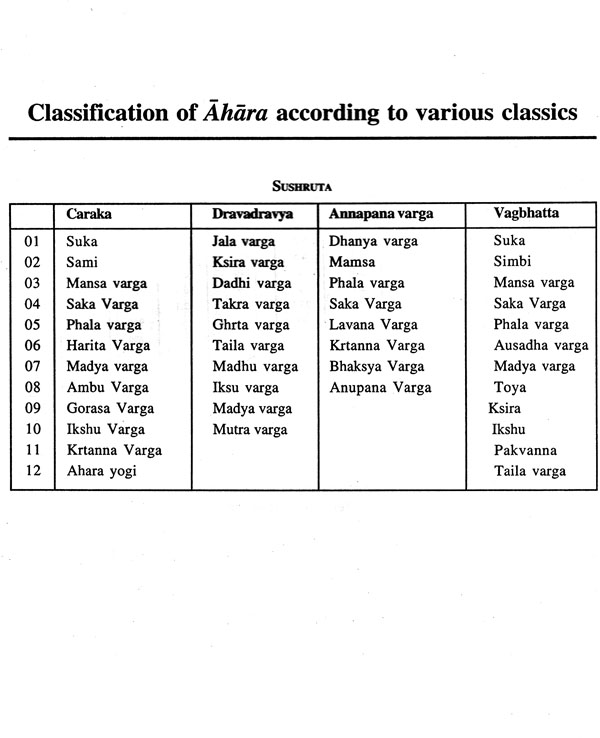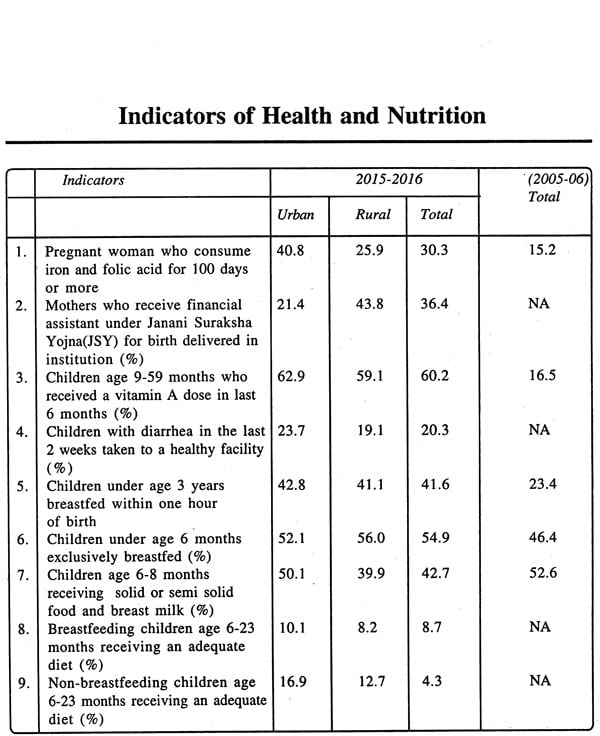
Ayurvedic Dietetics Nutrition and Health
Book Specification
| Item Code: | NAW968 |
| Author: | Kul Ratan Singh |
| Publisher: | Chaukhambha Prakashak, Varanasi |
| Language: | English |
| Edition: | 2019 |
| ISBN: | 9789388299435 |
| Pages: | 242 |
| Cover: | PAPERBACK |
| Other Details | 9.50 X 7.50 inch |
| Weight | 350 gm |
Book Description
Important references for Bruhatrayia and Laghutrayis and some other relevant books like Upanishad. Book is having wide information about Food Hygiene, Meal Planning, Modification of Diet and Therapeutic diet which comes under Clinical Nutrition. Tables and Charts of book are highlighted and presented recent data along with Nutritional problems and policies.
The only hindrance is all the information available in Ayurvedic principles of nutrition and diet is scattered in various contexts which is a hurdle for reader. Reading and learning will be easier when the entire disbanded cognizance is banded methodically. The book authored by Dr. Kulratan Singh titled AYURVEDIC DIETETICS; NUTRITION AND HEALTH is the embodiment of knowledge and information of `Ahara' available in various Ayurvedic classics and contemporary science. This book is a ready reckoned for food and nutrition and its practical applicability.
In his young age Dr. Kulratan Singh has ventured a mammoth task. This book is a reflection of his hardship and commitment towards in bringing value and raising the standards of teaching and learning in Ayurveda Academia. My best wishes and congratulations to Dr.Kulratan Singh and May Lord Manjunatheshwara bless him with healthy and wealthy life.
Aahar is one of the important pillars of Ayurveda, it means that it is one of the basic principles upon which health, happiness and harmony rests. It is concerned with diet and lifestyle and is essentially preventive in nature. In support of this, Charaka also commented that the unwholesome diets are important factors for the causation of diseases. In the absence of these factors, the individual becomes free from all diseases. Considering the utility of Aahar or food Charaka has stated that it sustains the life of living beings and in this universe they ran after it. Complexion, clarity, good voice, longevity, geniuses, happiness, satisfaction, nourishment, strength and intellect are all conditioned by Aahar (food). Recognizing the biological response of Aahar, Sushruta has also stated that it nourishes as well as instantly promotes strength and keep up the integrity of the body. The span of life, luster, enthusiasm, memory, Ojas and digestive fire too are increased and dependent to Aahar. Vriddha Vagbhatta has accepted Aahar as a causative factor for the desired sense objects and life itself as Ojas.
People of all ages and in all stages of life are interested in the relationship that this Aahar they eat has to their state of health. The significance of Ahara can be appreciated during intra-uterine life, even from the very day of conception, during these days, it is mainly met by mother but Aahar as diet embodies all the Rasas which generates and controls all the body dosas and contributes in the formation of all the seven body tissues (Saptdhatus). After the delivery Ahara becomes unavoidable for the growth and maintenance of the body, till maturity and adulthood. Further special Ahara regimen should be follow in case of geriatrics, pregnancy and lactation.
Nutrition is the science that interprets the interaction of nutrients and other substances in food in relation to maintenance, growth, reproduction, health and disease of an organism. Change in diet can help to prevent or control many health problems, including obesity, diabetes and certain risk factors for cancer and heart disease. Dietetics is the science of how food and nutrition affects human health; hence nutrition and food science can be used to help people improve health status.
In recent years, interest in the role of food and nutrition in promoting health and wellness has increased, particularly as a part of preventive health care, hence nutritional science has advanced tremendously in many directions and sometimes becomes highly technical that it is often different for an expert in one particular field to view this work clearly in relation to other closely allied development. The intention has been to set out the entire available wide ancient subject matter on Aahar having nutritional importance in proper perspectives and to bring out its many aspects in one writing.
In the present work, an effort has been made to shape it in style familiar to modern science dealing with the Aahar and its nutritional significance in respect to health and disease of mankind. Entire subject matter has been arranged into twenty eight chapters. The purpose of this book is to facilitate the application of fundamental concepts and principles necessary for the assessment of nutritional problems and the implementations of nutritional programmes to assist populations in emergency situations.
I am thankful to the authors of all books quoted as references in this book. I am thankful to respected Prof. Kamalesh Kumar Sharma, Head, Department of Swasthvritta and Yoga, National Institute of Ayurveda, Jaipur, for having writing the foreword to this book. He has been a great inspiration for me throughout. I am also very thankful to respected Dr.Shiva kumar, HOD, Department of Swasthvritta and Yoga, SDM College, Hassan, for writing foreword for my book along with his guidance.
I acknowledge all those who helped me to complete this work to my satisfaction. We express special thanks to my respected teachers Dr. Durgawati Devi, Dr. Sarvesh Agarwal, Dr. Kashinath Samgandi for inspiring me all through my career and also encourage me to write this book. I am cordially thankful to my colleagues Dr Pawan, Dr. Dheeraj Sharma, Dr. Ravi Joshi, Dr. Vipin Saraswat, Dr. Sandeep, Dr. Vijay and also students of my college. I always cherish the moments of inspirations, support and affection from my parents, my elder brothers and my son, Shiven. I am also deeply thankful to the publisher Mr. Arpit of Chaukhambha Prakashan, Varanasi for his generous gesture of bearing the entire expenditure of publication and propagation of the work for mankind.
Book's Contents and Sample Pages

